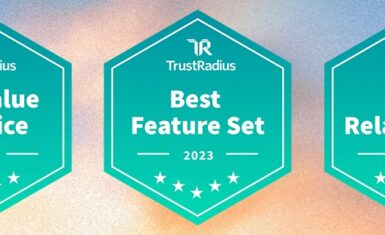I’m more than twice as likely to be unemployed than people who aren’t like me.
I’m twice as likely to only be employed part-time.
I’m less likely to work in management, professional, and related occupations.
Why? Am I less capable? Less educated? Less passionate? Less motivated?
None of the above. The reason is that I’m one of the one in four adults in the United States who has some type of disability.
In my case, I have multiple chronic, disabling physical conditions—all of which are essentially invisible. I’m also one of the approximately 15-20% of the global population who are neurodivergent, meaning we have a condition such as ADHD (me!), autism spectrum disorder, dyslexia, dyscalculia, dyspraxia, and/or Tourette’s syndrome. I also have a child who has multiple diagnoses that make him more likely to fall into the statistics above.
That’s why I’m so motivated to confront those alarming statistics—for me, for my child, and for everyone else who was written off (or wrote themselves off) because they were different. I think Work3 is the chance to make a real difference.
What’s Work3, and what does this have to do with disabilities and neurodiversity?
The future of work is here, and we’re calling it Work3. Work 1.0 was the traditional 9-5, in-office, heads-down structure that’s persisted since the industrial revolution. Work 2.0 is the digital transformation and shift to remote and hybrid work accelerated on by the pandemic. Work 2.0 made a lot of progress toward inclusivity, justice, and flexibility at work. And yet, it’s still largely characterized by taking the old attitudes of Work 1.0 and shoving them into a remote and hybrid landscape.
It’s not enough.
Work3 is where we make a real difference. Why Work3 and not Work 3.0? Because it’s not simply another step in the same staircase we’ve been on for 100 years. It has the opportunity to be a whole new structure.
At Alludo, we’re not just immersed in Work3; we’re actively building it. We’re creating a work landscape decoupled from time and space, where outcomes matter far more than traditional inputs. We aren’t hung up in where, when, or even how people get their work done. We want people to work better and live better. We’re delivering the products that make it possible for people to do just that, and we’re our own Customer Zero when it comes to embracing true freedom at work.
This shift toward Work3 has been exciting for a lot of people, and while I can’t speak for all of them, I can speak for me and what it means as a neurodivergent executive with disabilities. Work3 can create space for neurodivergent people and those with disabilities to finally, fully thrive in the workplace.
How? In short, Work3 is an opportunity to lean into your strengths and make accommodations for areas that you struggle with. It’s an opportunity to be better at your job because your job works better for you.
Again, shifting to a remote landscape isn’t enough. I may no longer have to commute to an office and sit at a desk all day, but the lingering constraints of Work 1.0 are still stifling, and if I weren’t in such a progressive company, those constraints would paint a false impression that I might not be good at what I do.
My body needs to take breaks throughout the day, or I get very sick. I do my best work at night, when others have signed off for the day. I’m excellent at my job, but if you measure me against the Work 1.0 yardstick where I’m supposed to be relentlessly present and at my best nonstop between 9 and 5, I won’t measure up. If you look at my outcomes, however, I’ll knock it out of the park. Why does the work world still care more about the green light showing up on Teams at 9 a.m. than we do about producing amazing work?
It’s time for a change. Work3 is that change. In Work3, I can shine late at night and take breaks and work in the way that works best for me. My colleagues can shine early and sign off early, or go for a run in the middle of the day, or play a game with their kids at 2 p.m., or whatever works best for them. They can work in comfy pants. They can work from an office or from the beach. Or the couch (or, in my case, in bed when my inspiration strikes at midnight).
Work3 is huge for me, but not only me. I believe that everyone benefits from dismantling old structures surrounding work and freeing up space and time for ideas—not just those who identify as neurodivergent or as someone who has a disability.
Remote work has been shown to help level the playing field for knowledge workers of all types, including parents and caregivers, individuals with disabilities, those with health issues, nursing mothers, and people who need to work outside their geographic region in order to secure a living wage.
Remote work has the potential to reduce discrimination based on race, ethnicity, or ability. It helps cut down on visual bias stemming from ethnicity, gender identity, tattoos, or hairstyles (all elements that are routinely used to discriminate against marginalized groups). It cuts down on expectations and costs associated with wardrobe and transportation.
Again, it’s not enough to be remote. Right now, work needs to be remote, inclusive, and free of artificial restraints, which is what it truly means to let people work, however, whenever, and wherever they want.
Diversity of thought, diversity of perspective, diversity of background—even, in my case, diversity of brain function—leads to breakthroughs and an eschewing of the status quo. This new phase is here. It’s flexible and inclusive. It’s productive. It’s dynamic, built on forward motion. And it’s a place people want to be. I’m so glad we’re building it here.
More viewpoints and insight on neurodiversity and inclusivity:






